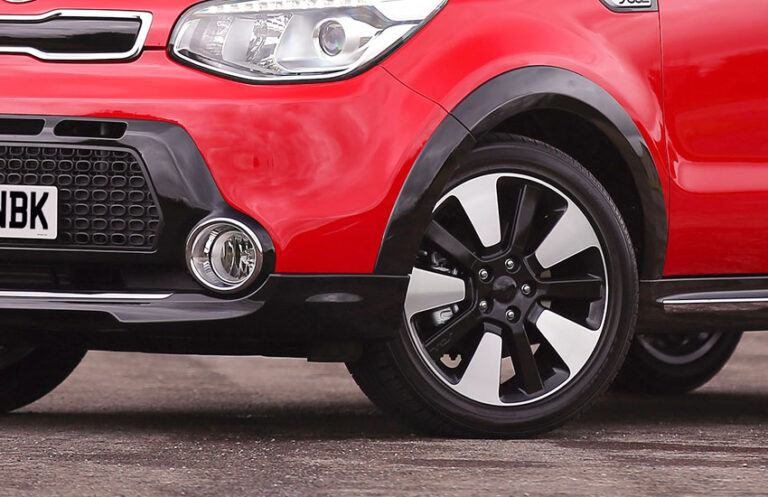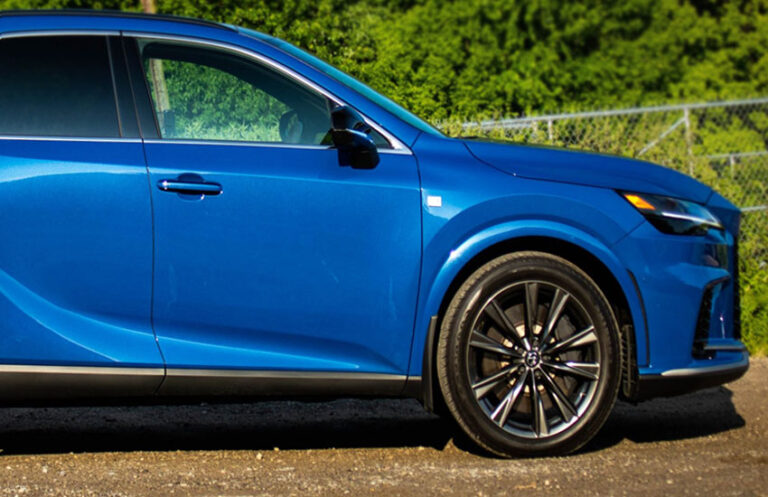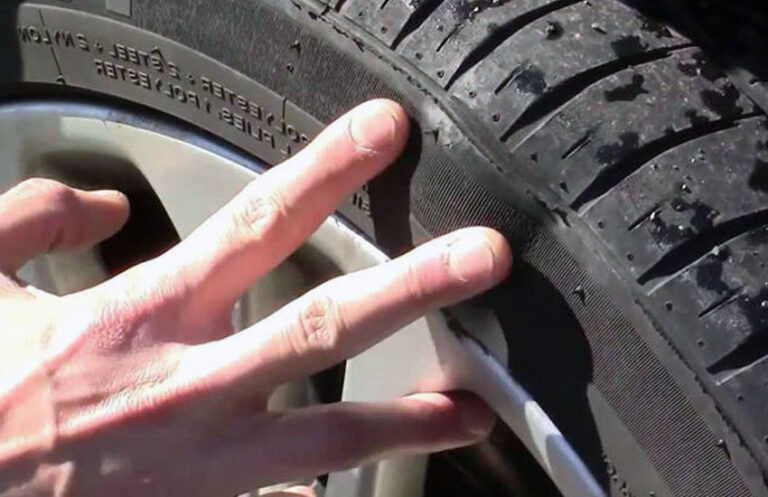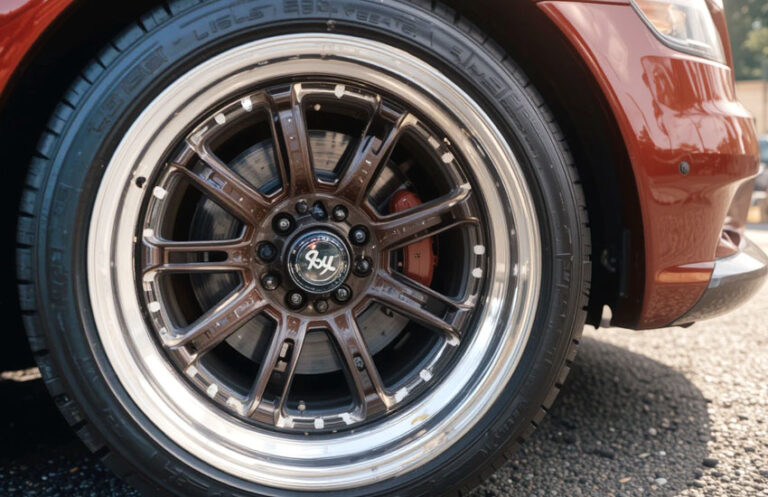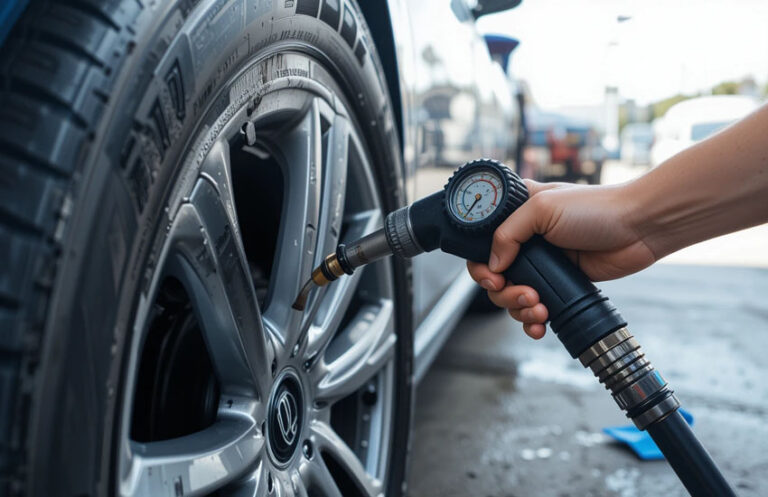As an Amazon Associate, I earn from qualifying purchases at no extra cost to you.
How to Know If You Need a Wheel Alignment: 6 Signs You Shouldn’t Ignore
You're driving your car and suddenly it feels like it's pulling to one side or your steering wheel isn't straight anymore. This can be scary and confusing. The answer could be simple — you might need a wheel alignment. A bad wheel alignment can cause your tires to wear out fast and make your car harder to control. In this article, you'll learn the real signs to look for and understand clearly when your car needs a wheel alignment, so you can stay safe and save money.
Car Pulls to One Side While Driving
When you're driving on a straight road, your car should go straight unless you move the steering wheel. But if your car pulls to one side even when your hands are not turning the wheel, it may mean your wheels are not lined up right. This is a very common and clear sign of bad alignment.
This pulling can be light, like a soft drift to the side, or strong, where you have to fight to keep the car straight. Even small pulling can be a big problem later. Roads are not always perfectly flat, so some very light pulling is normal. But if your car pulls hard or more than before, you should check the alignment.
This can happen from things like hitting a pothole, driving over a curb, or even normal wear and tear over time. Your car's suspension and tires are always working together, and when something gets out of balance, it affects your alignment.
Many drivers ignore this sign. They get used to the pulling and just hold the steering wheel tighter. But this is not safe. A car that pulls to one side can be dangerous, especially when driving at high speeds or in bad weather. It can also make long drives very tiring for you.
A pulling car can also mean uneven tire pressure, worn tires, or brake problems, but most often, it's a sign of bad alignment. So if your car is not going straight anymore, get it checked.
- Your car moves left or right without turning the wheel
- Driving feels uneven or harder than usual
- You notice this more on highways or straight roads
- Pulling has slowly gotten worse over time
- You've recently hit a pothole or curb
Steering Wheel Is Not Centered
When your steering wheel is straight, your car should be driving straight too. If the steering wheel looks off to the side when you are driving straight, something is wrong. This is another clear sign of poor wheel alignment.
You might notice this when you're on a flat road, and your hands are not moving the wheel, but it still doesn't sit in the center. It may lean to the left or right even when your tires are pointed straight ahead. This is not just annoying — it's also a safety issue.
Sometimes, drivers try to fix this by turning the steering wheel back into the center, but that's not solving the real problem. The wheels underneath are still pointing the wrong way, and this will keep causing problems.
This problem can also wear out your steering parts faster. If your steering wheel is always off-center, you will also start to feel like your car is harder to control, especially when turning or driving on wet roads.
Bad alignment can confuse your car's sensors too. Many cars today have safety features like lane assist, and when the wheels aren't aligned, these features might not work properly. This can make driving more dangerous.
You should not wait to get this checked. If your steering wheel is off-center, it's best to take your car to a mechanic or alignment shop right away. It's a simple fix with big safety benefits.
- Steering wheel sits sideways when driving straight
- Turning feels strange or uneven
- Lane assist or steering features stop working right
- Your hands feel off balance while holding the wheel
- It happened after hitting something or after a repair
Uneven or Fast Tire Wear
Tires should wear out evenly on all sides. If you notice that one side of a tire is more worn than the other, this is a strong sign that your wheels are not aligned. It means the tire is not hitting the road the right way.
You might feel like your tires need to be replaced often. You may also hear louder road noise or feel shaking through the steering wheel. This happens because the tires are under stress from being pushed at a bad angle. Misalignment forces tires to drag or slide slightly instead of rolling straight.
There are different types of uneven wear. One type is when the inside of the tire wears out faster than the outside. Another is when you see feathering — where the edges of the tread look like they've been rubbed with sandpaper. Both are signs of misalignment.
Rotating your tires helps slow down wear, but if the wheels are out of line, rotation won't stop the damage. Even brand-new tires can go bad quickly if the alignment is not fixed.
Bad alignment also affects fuel use. If your tires are dragging or pushing, your car needs to work harder. That means more trips to the gas station and more money spent.
Checking your tire wear often is smart. Use your hand to feel the surface or look closely at the tread. If anything looks or feels uneven, it's time to get an alignment check.
- Tires look more worn on one side
- Tread edges feel rough or uneven
- You need to replace tires more often than expected
- Fuel use goes up even though driving habits are the same
- New tires wear out too quickly
Loose or Hard Steering
Your steering should feel smooth and easy to control. If it starts to feel loose, hard, or shaky, your wheel alignment could be the reason. These changes can make driving scary and dangerous.
Loose steering means the wheel turns too easily and feels like it's not connected well. Hard steering is the opposite — you need to put in extra effort to turn. Both can mean your wheels are not pointing the right way.
Bad alignment can change how your steering system reacts. It can make your car feel wobbly or unsteady, especially when turning or driving fast. You may feel like your car moves more than it should when you move the wheel only a little.
These signs are easy to miss at first. They come on slowly and might only show up at certain speeds or on certain roads. But they get worse over time.
Sometimes, the steering also makes noises when turning, like clunking or creaking. These sounds can come from the stress caused by poor alignment. Other parts like ball joints or tie rods may also wear out faster if alignment is not fixed.
Driving with bad steering is not only hard — it's risky. If something breaks, you could lose control of the car. Always listen to your car. If it feels different when turning, get it checked.
- Steering wheel feels too loose or too stiff
- Car sways or feels unstable when turning
- Turns don't feel as smooth as before
- You hear noises from the steering system
- It's harder to drive straight without adjusting the wheel
Vibration in Steering Wheel
If you feel your steering wheel shaking or vibrating while driving, your car could be out of alignment. This is especially true if the vibration happens more at high speeds. The steering wheel might feel like it's buzzing, pulsing, or moving side to side slightly.
This is not just an annoying feeling — it's a sign that something is off. It usually means your wheels are not pointing in the same direction. One tire might be pulling or pushing against the road while the others try to stay straight.
Vibrations can also come from unbalanced tires, bent wheels, or bad suspension. But if you've already checked those and the problem stays, then alignment is a good place to look next.
Sometimes the vibration starts small. You may not even notice it at first. But it usually gets worse over time. Long drives can become very tiring when the wheel keeps shaking in your hands. It can also cause your arms and shoulders to feel sore.
This shaking is also bad for your car. It puts extra stress on the steering parts, which can wear them out. That means more repairs later.
If your steering wheel is shaking, get your car checked right away. A wheel alignment might solve the whole problem quickly and easily.
- Steering wheel shakes at certain speeds
- Vibration gets worse the faster you go
- You feel the car is less stable during driving
- Other parts like tires or suspension seem fine
- You've ruled out tire balance and still feel shaking
Noisy or Squealing Tires
Your tires should not make strange sounds while driving on normal roads. If you hear squealing or screeching noises — especially during turns — your wheels might be out of alignment. These sounds are often the first warning sign before other problems start.
Squealing tires happen when they drag or slide against the road instead of rolling smoothly. Misalignment changes how the tires touch the ground, causing stress that leads to noise. You may also hear the sound when braking or starting quickly.
Tires are made to roll forward with the right contact on the road. When they're misaligned, they lose grip and try to catch up, creating that sharp squeal.
Some people think tire noise means worn-out brakes or cheap tires. But many times, it's because the wheels are not in the right line anymore. Especially if the noise started suddenly, alignment is a likely reason.
Bad alignment causes more than just noise. The stress also causes the tires to wear faster, lose grip, and sometimes even overheat. That puts you at risk of a tire blowout, which can be very dangerous on highways.
The noise can also be louder when turning in one direction more than the other. Pay attention to where and when the sound happens. That can help your mechanic find the problem faster.
Don't ignore noisy tires. They're trying to tell you something is wrong.
- Tires squeal or screech when turning or moving
- Sounds are louder than before or come suddenly
- Braking feels normal but noise stays
- Other parts like brakes seem fine
- Noise comes more from one side of the car
Final Thoughts
Getting a wheel alignment might not sound exciting, but it's one of the best ways to keep your car safe, smooth, and long-lasting. When your car pulls, shakes, or makes noises, it's often trying to warn you. The sooner you check the alignment, the better your tires, fuel use, and steering will be. Regular checks can save you stress, money, and time later. So listen to your car and act early.
Frequently Asked Questions (FAQs)
Is it dangerous to drive with bad wheel alignment?
Yes, it can be very dangerous. Bad alignment makes your car harder to control. You might need to fight the wheel just to keep the car straight. It also wears out your tires faster, and that means they could fail when you need them most. Your brakes and steering won't work as well, and you'll use more fuel too. All of this adds up to serious safety risks. So if your car feels off, don't wait — get it checked.
Is it normal for wheels to get misaligned over time?
Yes, it is very normal. Even if you drive carefully, normal wear and road bumps slowly push your wheels out of line. Potholes, speed bumps, and curbs can also mess up alignment without you even noticing. Over time, these small changes add up. That's why regular checks, like once a year or after hitting something hard, are a good idea. Keeping your wheels aligned helps your car last longer and drive better.
Is it expensive to fix wheel alignment?
No, it's not very expensive. Wheel alignment is one of the cheaper car services. In most places, it costs much less than buying new tires or fixing worn-out steering parts. Some shops even offer it as part of a service deal. It may feel like a small thing, but it saves you money in the long run. If you wait too long, you could end up paying more for other damage. So it's smart to fix it early.
Can bad alignment ruin tires?
Yes, it can. When your wheels are out of alignment, your tires don't roll straight. That causes them to wear down on one side or in strange patterns. This makes your tires go bald fast, which can be very unsafe. You might need to replace them much sooner than expected. Even brand-new tires can wear out quickly with bad alignment. That's why checking alignment is a smart move after getting new tires too.
Can I drive long distances with misaligned wheels?
You can, but it's not a good idea. Driving long distances with bad alignment puts stress on your car. You'll use more gas, your tires will wear out faster, and the ride will feel less smooth. It can also make your steering wheel shake or feel weird, which is not fun on a long trip. Plus, it increases your risk of a tire blowout or losing control in an emergency. Get it fixed before taking long drives.
Do I need an alignment after getting new tires?
Yes, you should. New tires need a good alignment to work right. If your wheels are not lined up well, even new tires will wear out fast. You want the tires to make full, even contact with the road. That way they last longer and give you better control. Many tire shops will offer an alignment check when installing new tires. If they don't, ask for it. It protects your investment.
Do I need alignment after hitting a curb?
Yes, most likely. Hitting a curb can knock your wheels out of place. Even if the car feels fine right after, the impact may have changed something. You might not notice the effects right away, but your tires could start wearing unevenly soon after. It's best to get an alignment check just to be safe. A small curb hit can lead to big problems later if you don't catch it early.
Is it worth getting alignment done every year?
Yes, it is worth it. Even if your car feels fine, small alignment problems can build up over time. Getting it checked once a year helps catch issues early. It keeps your steering smooth, saves your tires, and can improve fuel use. Some drivers wait until something feels wrong, but by then the damage might be done. A yearly check is a simple way to avoid bigger problems and stay safe on the road.



